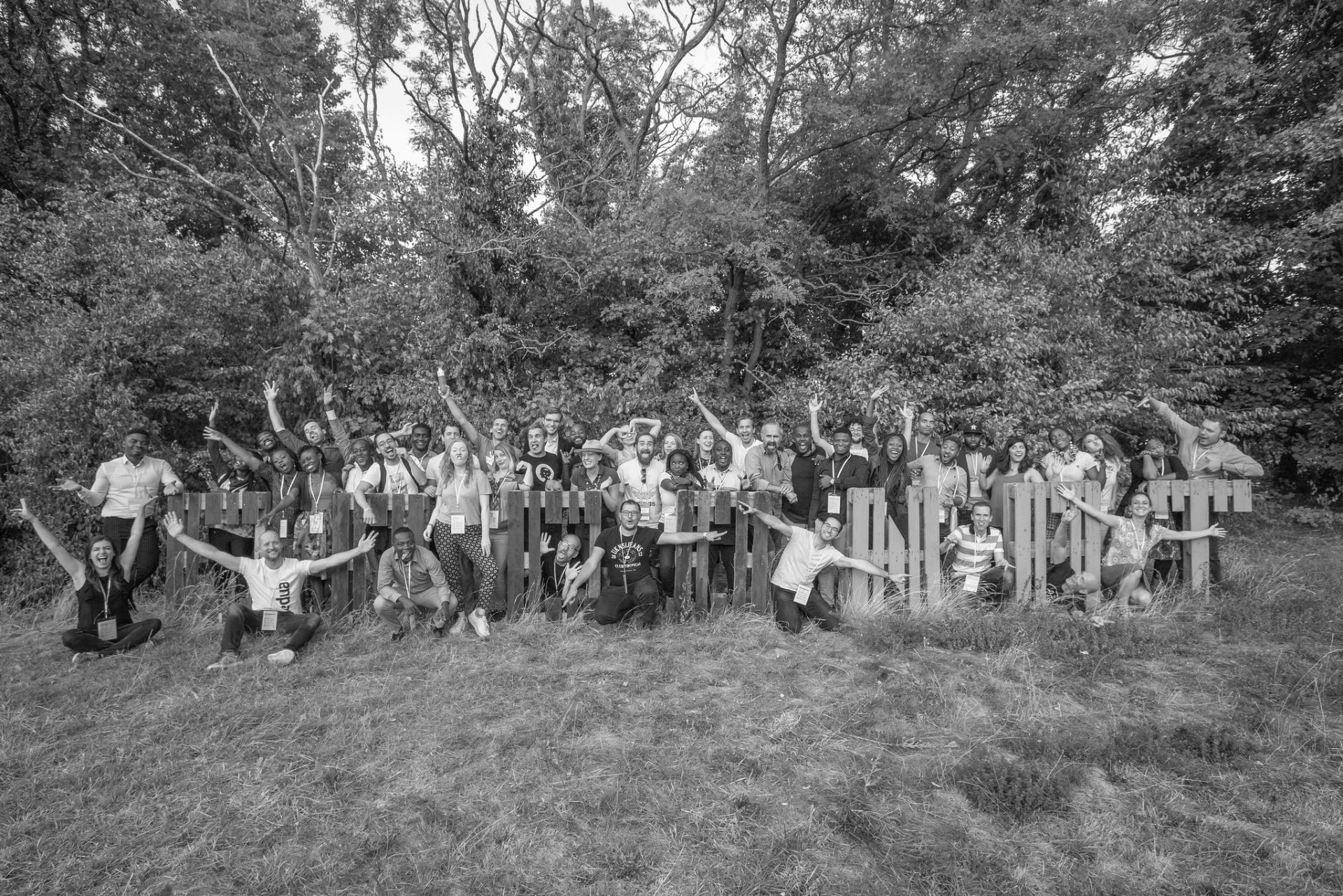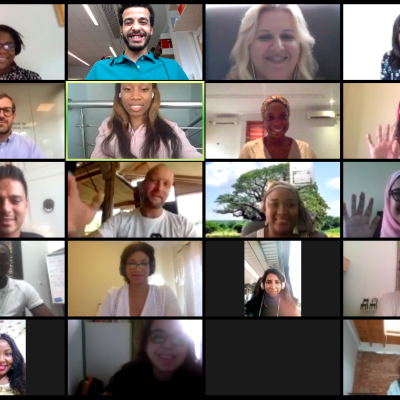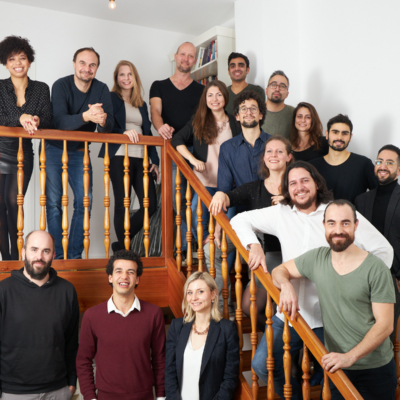
Vulnerability, Transparency and Communication: A Chat on Leading Through The Crisis
Growing a global entrepreneurial ecosystem means seizing every opportunity to share what you’ve learned with those around you.
As part of the Empowering Entrepreneurship Initiative, we had a virtual fireside chat with the participants of the COVID-19 Relief Program in Indonesia. The chat features insights enpact’s Managing Director and Co-Founder, Matthias Treutwein, who shared his experience about leading a team through times of crisis.
After the session, we realized that the discussion was applicable not just to the attendees, but could be helpful to entrepreneurs around the world currently coping with the transition into a new reality of business, management, and life in general. So, we decided to publish the chat.
1. Hi Matthias, what inspired you to start enpact and stay in the business regarding the challenges ahead?
My background is in international non-profit organizations with a focus on development cooperation and cultural management, which allowed me to work abroad for some years. But, I always had the feeling that the designed activities are not actually reaching the intended target group.
In 2013, Sebastian and I met during the implementation of a mentoring project. There we realized, what a powerful tool entrepreneurship and mentoring can be and decided to start our own social enterprise.
Ever since, I am trying to build a network of inspiring and engaged people, empower them to create sustainable and fair jobs and to improve in general the way international development aid is implemented by focussing more on changemakers – and not the agencies.
From that moment, constant change has been the only constant we had. And this is, what makes it so thrilling, exciting, sometimes frustrating, but always enriching – especially on a personal level. This entails that my own role is constantly changing and that is what inspires me to face and tackle all hurdles. It has been a rough ride at times, though.
2. How do you maintain and build the team solidity and commitment to get things done, aside from raising salary or benefits?
One of the key things that I have learned over the years, is that it is important to jointly develop values – and then live up to them. If this is done well, you are creating a company culture, which then is the basis for team solidity and commitment.
On the way, aim to really focus on providing the following things: a larger purpose and the “why” you are doing what you are doing, the possibility for personal growth objectives as well as social interactions that can come in many different formal and informal formats, like team dinners. brown bag sessions during lunch time, Karaoke singing on Fridays, team retreats, etc.
Also, as hard as this can get at times, always stay open-minded to hear feedback from your employees because everyone wants to be heard!
3. What is the biggest take-away from your experience of running enpact so far?
Dream big, dare to oversell, do not take “no” for an answer and be ready to knock your hands bloody, until finally a door opens. Also, remain humble, accept that there are many things you really are not good at, and maintain an opened-minded willingness to learn. Most importantly: Surround yourself with people who are better than you!
4. Hi Matthias, we have some participants who also run non-profit organizations just like enpact. Do you think there is a special resilience/ leadership skill to run this kind of organization/business/institution?
You probably have to be even more hard-headed and impact driven than your for-profit counterparts. At the same time, the key areas for any manager to excel at remain the same, regardless of the sector.
According to a research published in the International Journal of health Policy and Management, the resilience of organizations is influenced by governance, leadership practices, organizational culture, human capital, social networks, collaboration, planning and information management.
The critical part for non-profit organizations as a mission is the purpose of your organization’s existence. The leadership principles remain the same, but the leadership styles must be aligned to the organizational needs. Hence, it is crucial to refer back to your organization’s mission for the sustainability of your organization. You could formulate a resilient approach per organization’s mission by either utilizing internal resources or employing third party consultants.
5. Do you have any method to measure your staff /team performance during the hard times?
In the past, we strongly focused on our clients’ (donors and participants) requirements and meeting their needs in order to measure our own performance. While this is surely one important indicator, it definitely is not the only thing to invest your effort in.
A little over a year ago, we introduced objective key results and are now applying a parallel approach, which has both bottom up and top down elements. We currently have four strategic objectives; to which all teams and individuals should contribute, by giving their activities measurable and visible key results. Two of them are related to our clients, one for the donors and one for the participants, respectively. The third one focuses on the inside; meaning how we enpactors want to continuously enhance the way we work with each other. and The last one focuses on the outside; meaning the visibility of the work that we do and its impact.
In concrete terms this means that on the project level, we do in-depth retrospectives and post-mortems to learn from our successes and failures. And the same applies to the personal level. Here, we introduced annual appraisal conversations, where we align the team’s personal growth objectives with how and where they can be integrated with and realized on the company level. This is an important and sensitive process which requires a lot of effort on both sides – the employee and the employer.
6. What was the most painful point in enpact’s journey and how to convince the people inside that, “we can get out of this point and have an impact further”?
Having to let good people go due to the lack of upcoming projects. Having to send the team into short-time work. Seeing everyone struggle with the workload. Seeing the struggles and hardships of our participants on the ground. The necessity to navigate misalignment of values with partners for the sake of the greater value to the development of the beneficiaries and the organization. The list gets longer. There are many painful and controversial decisions that we had to take over the years.
What we have learned is that it is crucial to maintain good communication and be transparent. But, sometimes this is also very difficult. We humans have a tendency to only hear what we want to hear and often there are fundamental gaps between what a speaker intends to say and what the audience actually hears.
One day, I will publish a book with all the hardships, absurdities, failures and successes that took place.
7. We are just about to begin to start a new business line. What is your advice for me to convince potential business partners of this step during uncertain conditions and for the upcoming future?
- Understand what your customer/partner really needs and how you can create value for them
- Make this value very visible and tangible for them, and keep asking questions to show that your concern is that they get what they need, while at the same time look and feel good.
- Also know what you aim to get out of the deal, and be as transparent about it as possible
- Focus on the win-win nature of the partnership
- Build and maintain a personal contact at your partner’s company
- Ensure that the goals of both parties align
- Be patient!
Read more: How to partner with larger companies as a startup.
8. Hi Matthias, how do you apply the learning process on leadership styles or conduct exercises on this at enpact?
There are great tools and assessments available; starting from an evaluation of your personal characteristics, underlying psychological traits, cultural values both on the individual and the organizational level, to handbooks that enhance the understanding of your own leadership and learning styles.
Some of these tools, like a cultural value assessment on the personal level are already part of our hiring process. A concrete training – or better – a self-reflection curriculum is something that I started working on with some colleagues and that I hope to roll out over the whole organization this year. Of course, this can only be done on a mutual agreement that both parties – meaning the colleague and myself (or someone else from the leadership team) – are willing to engage on this journey.
9. Hi Matthias, how can we reach a good result for our business if we just don’t have good employees?
Unfortunately, you need good employees to achieve good results for your business. If you currently think that you do not have good employees at the company, then make them good! That is what a good leader should do, to make sure the employees have the resources they need to succeed. Hence, it is important to set up and align the employees’ work and your company’s objectives and goals.
10. Hi Matthias, do you have any tips or methods on how to ensure and motivate the team that our company will survive and will take a leap forward after our current struggle with financial problems during this pandemic?
I am not sure if I am the right person to answer that question. You as business leaders on the ground have a much harder time than myself and you have my enormous respect.
What I learned from our difficult times is that you need to differentiate between things that you can change, and things that you cannot. Once this is clear, focus your energy and resources on doing the things that can be changed – even through minor steps. As leaders in your case, the question you should ask yourselves is: What can I do to get out of the crisis?’ and be honest with yourself. Only then, you’ll be able to connect with your employees, telling the truth without sugar-coating anything. Being honest to yourself and your employees helps maintain a strong connection – a necessary foundation for sustained growth. Another thing you might want to consider is to keep the human connection with your employees, especially in this trying time, in order to protect their mental health.
Don’t be afraid to show your own vulnerability – while this of course may present itself differently from culture to culture. If your company is able to provide any additional support in regards to flexible working hours, additional training, an employee assistance program, be sure to communicate it in a clear manner and process to your employees.
Most importantly, you need to maintain trust! And the fact that we are all humans, who struggle with the effects of the pandemic on various levels. Some simple actions that you can take are:
- Schedule a regular meeting to bring employees together using group-chat tools such as Zoom or WhatsApp.
- Invest time in preparing for these meetings so they are meaningful and value-adding.
- Invite people to share useful resources and tips they have found while isolated.
- Reach out to employees individually to offer emotional support.
- Provide updates on business planning that is underway.
- Arrange to maintain regular (or additional) social events that would normally occur in the workplace, such as daily coffee catch-ups or birthday celebrations.
- Encourage people to stay in touch away from workplace forums.
For more ways on how to support your employees during the pandemic, check out this guide.
To sum it up, here are some key tips you can take with you during the current crisis and beyond:
- Surround yourself with people who are better than you
- Don’t be afraid to show vulnerability
- Involve your team in your planning and give them the right platform to be heard
- Invest in the development of your team, partners and stakeholders
- Remember that we are all human
There’s no playbook for how to lead during a crisis, but the one thing we can do is to share what we learn along the way – what works, what doesn’t, and how we can make it better for everyone involved.



